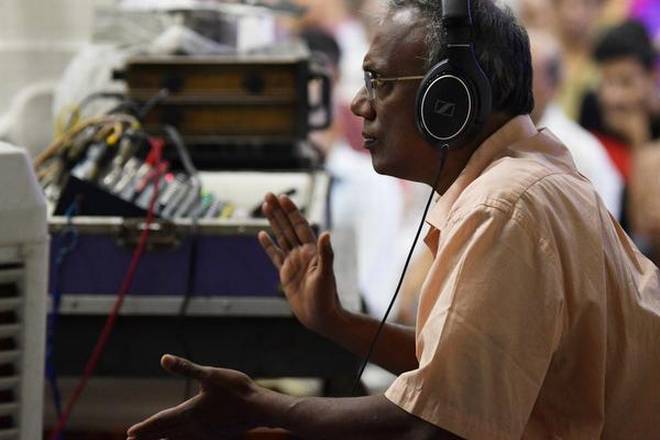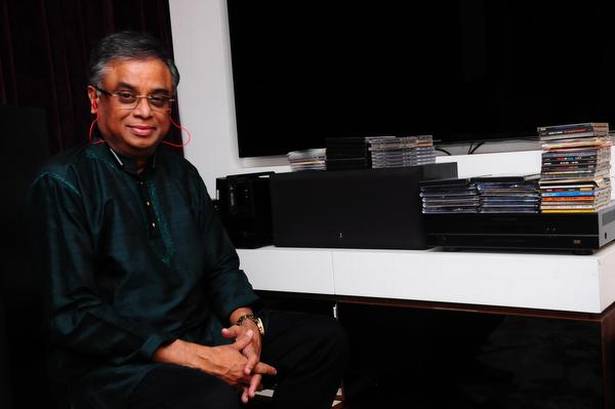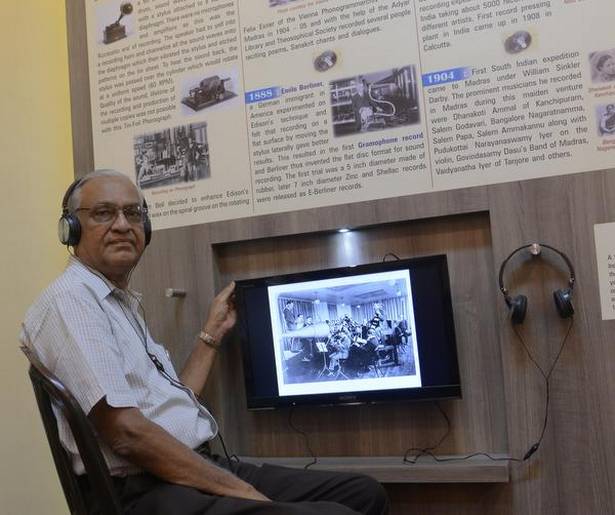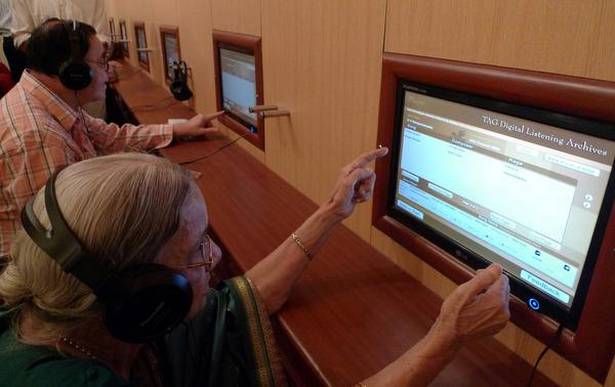Monthly Archives: February 2018
05
04
Organic, handspun, handwoven: this muslin from Dindigul doesn’t get any better
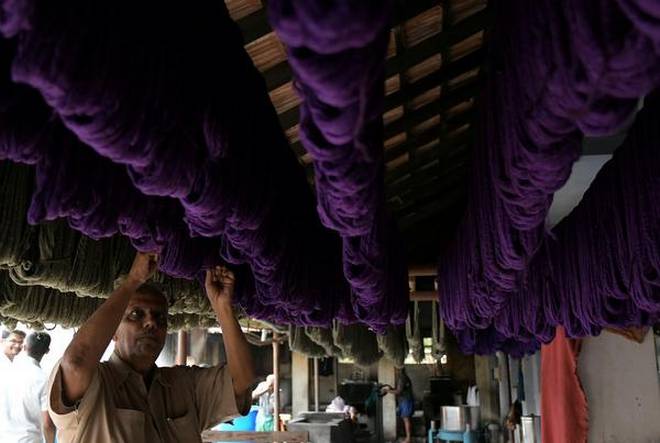
It is now up to the next generation to take this exquisite tradition to the runway
It’s that time of the year when a heavy mist rolls down Sirumalai, and the surrounding hills look forbidding. On the highway leading to Dindigul, streaks of yellow light stain the pre-dawn sky. And some shafts of sunlight stream in through the chipped tiled roof of V. Jeevanandam and J. Bhoomadevi’s home.
Bhoomadevi is already huddled around a bubbling cauldron, making the starch that her husband will use to stiffen yarn.
The previous evening, she bagged the best artisan award from Gandhigram Khadi Trust in Dindigul, a district in south-west Tamil Nadu. She is chuffed by the recognition, but it is time to get to work.
In her home in the Weaver’s Colony, Bhoomadevi opens a suitcase to show me her most prized possessions: Muslin saris that she and her husband have woven. There aren’t too many in the suitcase: because although the couple makes them, they can barely afford them at ₹4,000 to ₹5,000. Sometimes she indulges herself, like last night, when she wore one of these heirlooms to the award function.
The concoction in the cauldron has reached the right consistency and Jeevandam picks up the vessel and in the faint light of street lamps makes his way to the open space outside where a series of wooden structures have been arranged. He and his friends stretch the yarn tautly between pegs and brush the starch on to it. The sun has risen now and the yarn can be dried.
Native over BT
Near the foothills, about 20 km away, at A. Vellode village, G.F. Viswasam, a marginal organic farmer, works the black loamy soil where a tall cotton crop is already bearing plump little buds. This is karungani, a native variety of cotton, which Viswasam adopted despite his community’s scepticism.

He knew the challenges that awaited him: that traders, who preferred BT cotton — considered better suited for powerloom production — won’t be knocking on his door.
But Viswasam was afraid to grow BT cotton. If the rains failed in this dry region, not only would the crop fail, the land would be contaminated with chemical fertilizer rendering it unfit for cultivation.
Karungani on the other hand had deep roots that reached almost two metres deep to tap water, and didn’t need constant irrigation. All it needed was goat dung to thrive.
The only catch was that the native cotton fibre was 24 mm in length on average, compared to BT cotton fibre, which was 34 mm long. But karungani is well suited for handwoven muslin. And thanks to Gandhigram Khadi Trust secretary K. Shivakumar’s love of muslin, Viswasam, Jeevanandam and Bhoomadevi now have assured sources of income.
Gandhigram is now trying to revive interest in this delicate fabric that Europe once imported in copious quantities from India. “It is a niche product and we are striving to keep the tradition alive,” says Shivakumar.
The trust has been conducting workshops for farmers hoping to encourage them to cultivate native cotton because it is better suited for the local climate.
“The muslin saris that we make have a thread count of 100,” he says proudly. Cotton bales are spun into yarn at the Gandhigram mill where machines from the 1950s still run smoothly.
The only thing Gandhigram lacks is a ginning unit to separate the seeds from the fibre and also help create a seed bank of native seeds. A. Prasath, who left his cushy job at Reid and Taylor to be a part of this movement, and C. Saravanan, the master dyer, are tapping into the organic dye industry.
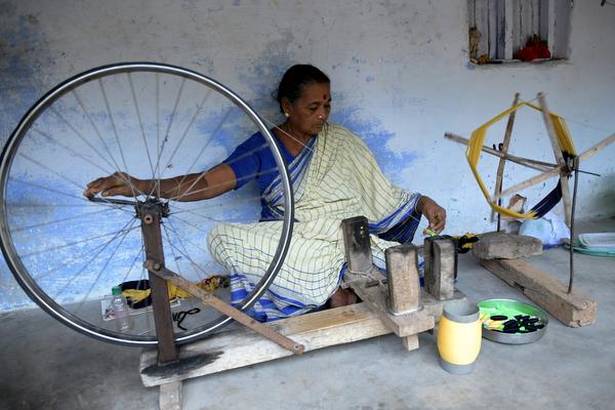
At the dyeing unit at Gandhigram are T-shirts, shawls and stoles, each bearing a tag that says they are organically dyed, ready to be shipped to Europe.
Wanted: designer
Outside the dyeing shed are nuts, tree barks and roots, procured from tribal communities in far away Chhattisgarh, drying in the sun. They will be pounded, ground and boiled to release hidden colours.
P. Palaniammal, a worker at Gandhigram dips yarn into a pot of indigo dye. The yarn turns light green after the first dip, emerald after the second, dark sapphire and then finally a brilliant indigo.
Lalitha Regi, a doctor, is helping the team market this product. What can be better than organic cotton, hand-spun, hand-woven and hand-dyed in organic colours, she asks. But this fabric is in need of a designer who can popularise it. Lalitha has been attending exhibitions to display these unique weaves.
Slowly but surely muslin seems to be coming into vogue. S. Meena, 24, who now works in one of the dyeing units at the Trust, tells me that she spent her first Diwali bonus on a ₹2,600 muslin sari. “Not even a silk sari would have given me so much happiness,” she says. “It is the texture, the satiny feel against the skin and the lightness of the cloth, and the fact that it breathes, that makes this fabric so alive.”
It is six in the evening and Gandhigram is shutting down. But the day has not ended at the Weavers Colony. As the shadows lengthen over the loom, Jeevandam is tying up the warp and weft for tomorrow’s weaving.
I hear the clickety-clack of a lone shuttle somewhere as a radio hums in the distance. It is now for the next generation to carry forward this exquisite tradition, popularise it, and one day maybe even take it to the runway.
source: http://www.thehindu.com / The Hindu / Home> Life & Style> Field Notes> Fashion / by Beulah Rose beulah.r@thehindu.co.in / February 03rd, 2018
02
Meet the archivists of Carnatic music
Even in this day and age, when any music is available at the click of a button, their passion propels them to keep adding hours of music to their personal stockpile.
They seek out the old and forgotten and curate them back to life. They hoard them, in thousands of hours, they revel in their possession — even if they can no longer ‘touch and feel’ it. They are the collectors of Carnatic music.
Even in this day and age, when any music is available at the click of a button, their passion propels them to keep adding hours of music to their personal stockpile.
There are many, like K.G. Sivaramakrishnan, a retired physics teacher and a die-hard Madurai Mani buff, who has about 700 hours of music in his possession. There are people, like Rajappane Raju, an oil industry professional and an avid photographer, who has built a collection of Sanjay Subramanian’s music by picking up every bit of his music put on sale. But people like Sivaramakrishnan and Raju are really small-timers in the collection game.
The big collectors are those who have tens of thousands of hours of music, and counting — result of decades of meticulous mopping-up of private pools of music, often lying in the cellar gathering dust.
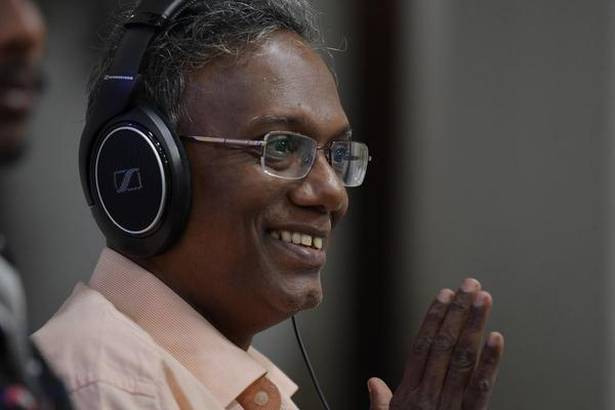
S.L. ‘Yessel’ Narasimhan of Triplicane, Chennai, claims to own the “biggest collection of Carnatic music in the world” in his computer — about 60,000 hours of music. R. Sridhar, executive vice-chairman of IndoStar Capital Finance and a former managing director of Shriram Transport Finance, owned about 25,000 hours of music. R.T. Chari, a septuagenarian, who runs the TAG Corporation, is another major collector who merged his 10,000-hour collection with another huge trove of the Music Academy, the premier music and dance chamber in Chennai.
Yessel would track down a person who has old music — cassettes, spools, gramophone records, or even iwire — and talk him into gifting the huge collection. He never stops until he succeeds in his mission. He has no compunctions about having sometimes copied the music clandestinely, without the knowledge of the owner, for after all, there is no commercial angle here.
“Those who possess recordings generally are willing to share, but they fear the cassette or spool may not be returned and are loathe to part with it even for a few hours of recording,” says Chari. “Many people had old music recordings in the form of spools, but would say, ‘you bring the machine to my house and copy it here’, and that is what I did.” Sometimes, people died leaving a pile of music and their family, not being particularly interested in classical music, would happily hand them over to a collector like Chari or Sridhar.
Sridhar recalls a happy moment in 2003 when he made a big acquisition — about 2,500 concerts. An acquaintance of his, called Krishnamurthy, told him he had some music recordings and invited him home to see his huge collection — filling up the shelves. Just when Sridhar thought he had seen it all, Krishnamurthy pulled a big drawer from under the cot filled with cassettes. Krishnamurthy himself had built up the collection, copying private recordings of concerts from spools and gramophone plates.
When Krishnamurthy expressed his concern about safe-keeping of his stockpile, Sridhar offered to digitise the entire hoard. The cache changed hands. Meanwhile, Y. Prabhu, son of R. Yagnaraman, who was the secretary of Sri Krishna Gana Sabha, also donated recordings of around 1,000 concerts from the sabha archives to Sridhar, for remastering it digitally.
Chari’s story is similar, except that he began collecting earlier than Yessel or Sridhar.
Why do these people collect music? After all, there is only so much music a person can listen to in a lifetime! The answer is: to preserve for posterity.
Chari, who is the vice-president of the Music Academy, after donating his collection to the Academy, sets himself upon the task of digitising the whole lot. The Academy, in May 2008, made available a room and four full-time assistants. Chari, spending ₹ 30 lakh, has converted about 12,000 hours of music and “another 25,000 hours waiting to be converted.” Meanwhile, Mathew Chacko of the Precision Group of Companies developed a software for the Academy, gratis. The result of the effort can be seen in the archives of the Academy — it has ten terminals, with individual headsets, where any person can come and access music and dance according to the year, artiste or raga-wise. A researcher can compare the same artiste’s music over the years, or a raga sung by different people over decades and analyse the evolution of music.
Like Chari, Sridhar also donated his collection to the Yagnaraman Memorial Trust that he founded, in memory of the late secretary of Krishna Gana Sabha.
Yessel, who prefers to call himself an ‘archivist’ rather than a collector, says his 60,000 hours of music, available in hard disk, is a database for any researcher. He has put a lot of his music for public access at sangeethapriya.org.
But how many access it? Unfortunately, not many.
For instance, the Music Academy archives gets not more than three visitors a day, says Chari. And the visitors are either students or junior artistes, who want to pick up tips from the masters or researchers. Rare is a visitor who wants to listen to the music for the pleasure of it.
“You have to make music available to people on their mobile phones,” says Sridhar, who, in collaboration with Yessel, attempted, in vain, to get people come to his ‘listening sessions.’ Now the two are jointly developing an app for that purpose.
That is the irony of Carnatic music today. While the supply has increased exponentially, both with new artistes coming onboard and collections in Cloud, the constituency of listeners has not gone up.
“Nothing can be done,” says Chari, nonchalantly, “Carnatic music is a complex system to understand.”
source: http://www.thehindu.com / The Hindu / Home> Entertainment> Music / by M. Ramesh / February 01st, 2018
